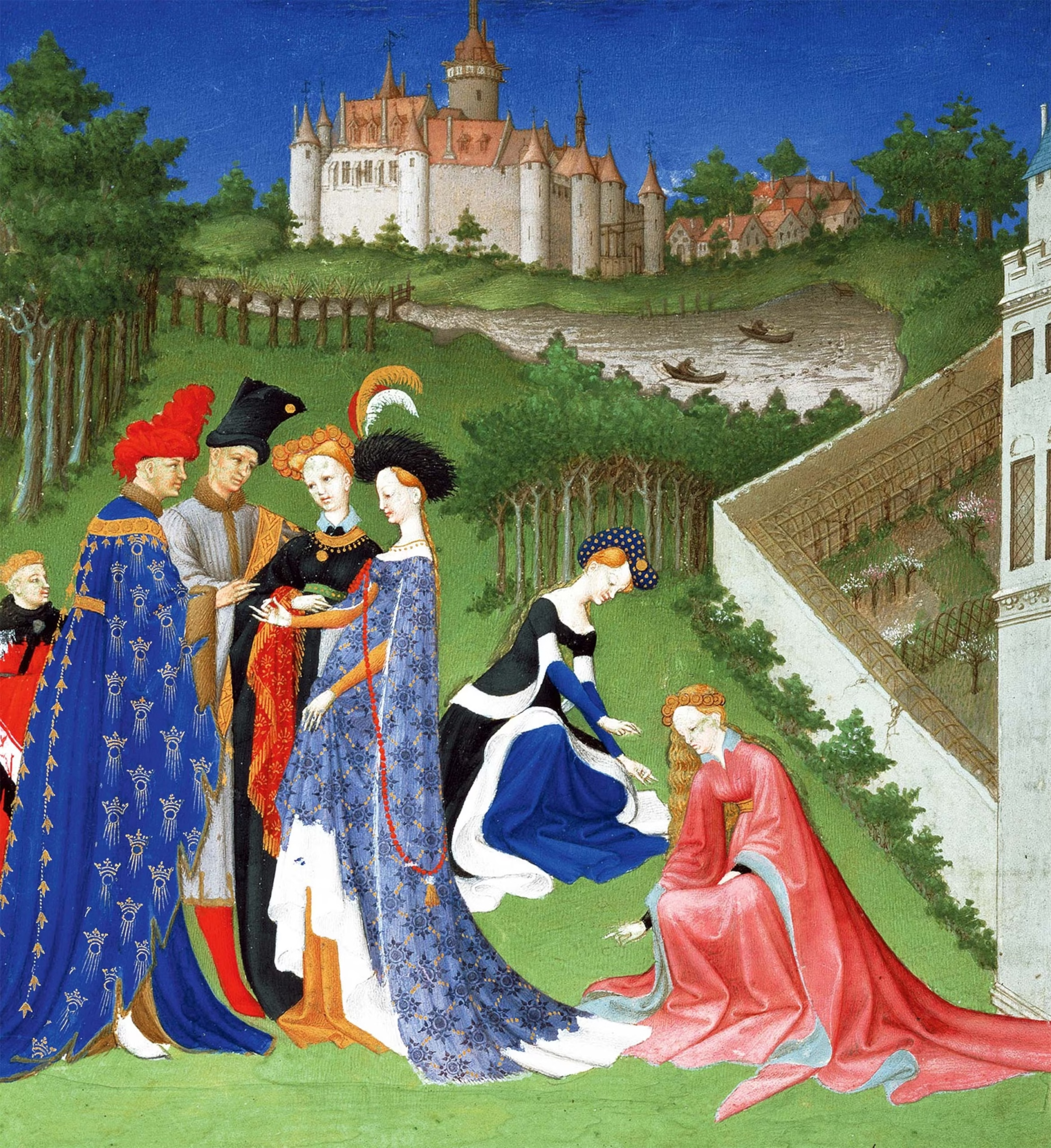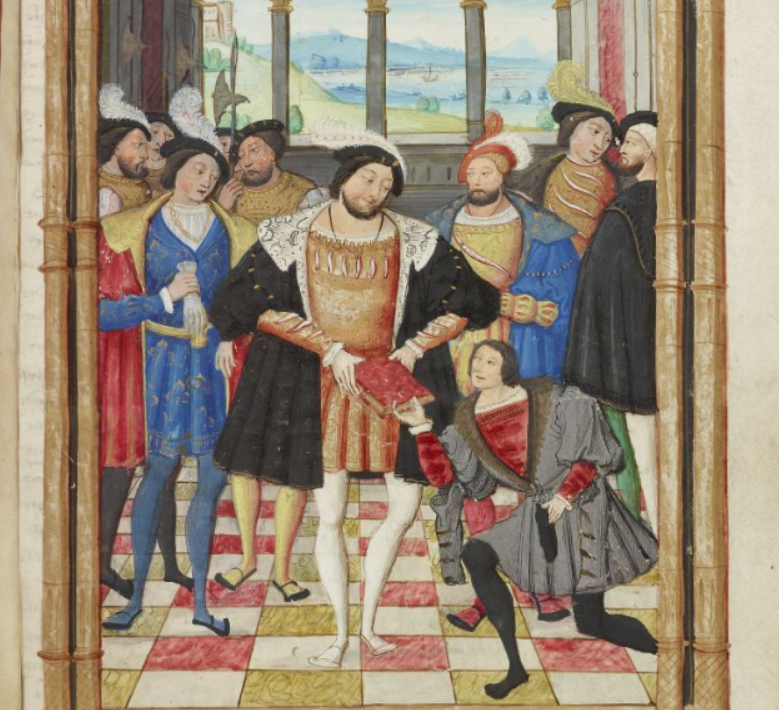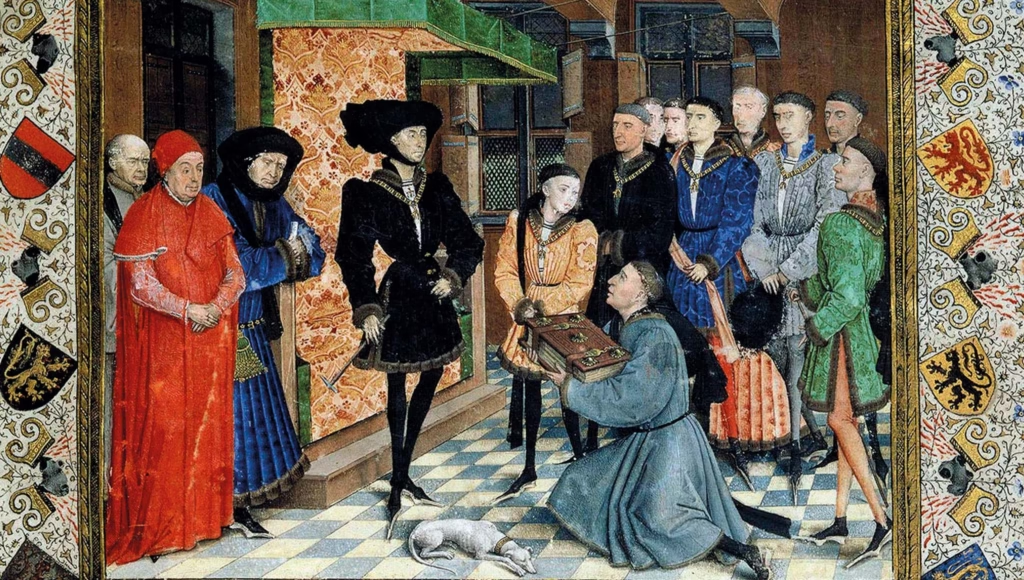Codpieces, Colors, and Couture: The Fashion Revolution of Medieval Men

When we think of fashion revolutions, we often imagine the flamboyance of the 18th century, the sharp lines of Victorian tailoring, or even 20th-century modernism. But few realize that one of the most radical shifts in men’s fashion occurred during the Middle Ages. Between the 12th and 15th centuries, men’s clothing transformed from draped, shapeless tunics into highly stylized, body-conscious garments that emphasized masculinity, status, and even sexuality. This was a time when men’s fashion broke away from classical modesty and embraced flamboyance, experimentation, and individuality.
Early Medieval Simplicity (5th–11th Century)
In the early medieval period—especially post-Roman Europe—men’s fashion was largely practical and utilitarian. Garments consisted of:
- Tunic: A simple, knee-length or longer garment, often belted at the waist.
- Leggings or hose: Separate woolen leg coverings, sometimes wrapped with bands.
- Cloaks: Fastened with brooches for warmth and status.
- Materials: Mostly wool and linen, dyed with earthy, muted colors.
This style reflected the chaos of post-Roman Europe, where function outweighed flair and status was often communicated more through weaponry or land ownership than fashion.
The 12th–13th Century: A Shift in Silhouette
By the 1100s, European society was stabilizing with the growth of feudalism, urban centers, and courtly culture. This gave rise to more elaborate fashion trends:
- Tailored tunics: Became more fitted at the waist and sleeves.
- Bright dyes: Like scarlet, indigo, and green signified wealth.
- Layering: Wealthy men wore multiple layers, including surcoats, cotehardies, and capes.
- Accessories: Belts, gloves, and jeweled brooches became markers of refinement.
This period also witnessed cultural exchange through the Crusades, which introduced new fabrics like silk and cotton into Europe, making fashion more luxurious for the elite.

The 14th Century: The Birth of the Tailored Body
The true revolution began in the 1300s, when men’s clothing shifted from flowing drapery to form-fitting tailoring. This was the age of:
- Doublets and Cotehardies: Close-fitting tunics with buttons or lacing that molded to the torso.
- Hose: Tight leg coverings became the norm, sometimes made from bright contrasting fabrics.
- Pointing: Ties that fastened hose or sleeves to doublets, allowing for customized fits and even a bit of skin exposure.
For the first time, men’s legs, waists, and buttocks were emphasized—a departure from centuries of draped anonymity. Fashion became a display of youth, virility, and status.
The Codpiece Craze (15th Century)
One of the most famous (and infamous) medieval fashion trends was the codpiece—a padded, sometimes elaborate covering for the male genitals.
- Originally, the codpiece was a practical solution: As men’s tunics grew shorter and hose tighter, there was a need to cover the groin area.
- Over time, codpieces became larger, exaggerated, and decorated—some embroidered, slashed, or even used to store small items.
- They became a symbol of masculinity and virility, often linked with both sexual prowess and political power.
The codpiece, in many ways, marks the peak of medieval male fashion as performance.
Fashion as a Marker of Class and Power
As cities grew and the merchant class rose, sumptuary laws were introduced across Europe. These laws dictated who could wear what:
- Only nobility could wear certain fabrics (like silk or velvet) or colors (like purple).
- Middle-class men were limited in the length of their tunics or width of their sleeves.
- Bright colors and extreme tailoring became a way to assert class distinction.
In court circles, fashion was also a game of favor and status. The more elaborate and impractical one’s attire, the higher one’s presumed standing.
The Late Medieval Gothic Look
By the late 15th century, men’s fashion reached peak extravagance:
- Slashing and puffing: Tunics and hose were slashed to reveal contrasting fabrics underneath.
- Pointed shoes (poulaines): Shoes extended dramatically beyond the toes.
- Long sleeves: Draping sleeves that trailed to the floor were popular among the elite.
- Shoulder padding: Began to broaden the silhouette, foreshadowing Renaissance fashion.
This Gothic look was the precursor to Renaissance excess, and it set the tone for centuries of gendered, symbolic fashion.

Summary
The Middle Ages may seem conservative at first glance, but when it comes to fashion—especially for men—it was a time of radical transformation. From the rise of tailoring and codpieces to the explosion of color, texture, and accessories, medieval men reshaped the masculine aesthetic. Clothing was no longer just a matter of warmth or modesty—it became a stage for sexuality, identity, hierarchy, and power.
This often-overlooked fashion revolution reveals how men, too, have used dress across time to express themselves—and how even the most surprising trends often start with unexpected practicality.




